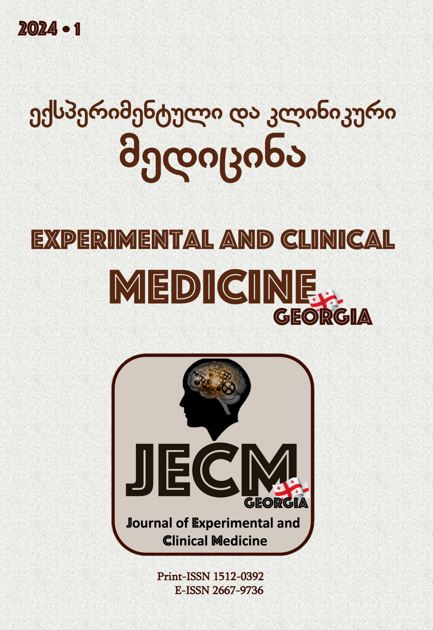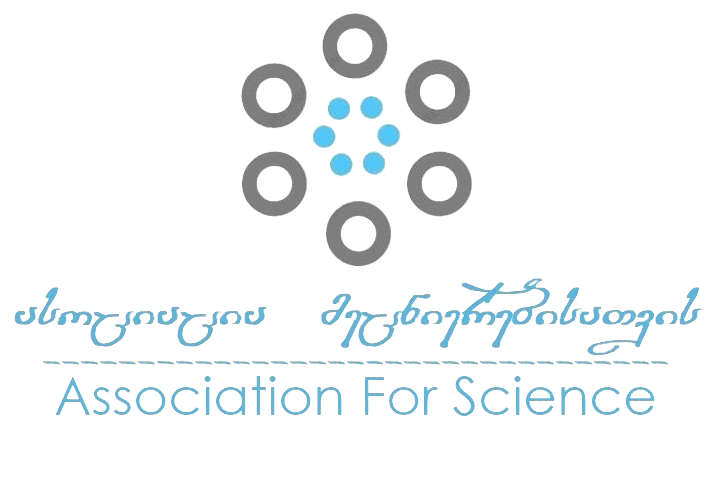CHARACTERISTICS OF EXTRACELLULAR MATRIX AND ANGIOGENESIS BY SIZE OF PROLIFERATIVE UTERINE LEIOMYOMAS IN WOMEN OF REPRODUCTIVE AGE
DOI:
https://doi.org/10.52340/jecm.2024.01.08Keywords:
Proliferative, uterine, leiomyomas, women, reproductive age, angiogenesisAbstract
Uterine leiomyoma is a benign tumor characterized by heterogeneous growth of muscle tissue, the development of which is closely related to changes in the extracellular matrix (ECM) and angiogenesis. The extracellular matrix and angiogenesis play a critical role in the development of uterine leiomyomas, affecting tumor structure, function, and growth. A thorough study of these molecular processes is important to more effectively control the growth and development process of leiomyoma and to create the possibility of developing new therapeutic approach.
The aim of our study is to evaluate the extracellular matrix, the degree of fibrosis and angiogenesis, taking into account the size of the nodules, in the peripheral and central part of proliferative leiomyomas in women of reproductive age. Research objectives: in leiomyoma nodes up to 1 cm, 2cm, 3 cm and 4 cm: 1. The degree of extracellular matrix and fibrosis; 2. Assessment of angiogenesis. Research methods: detection of qualitative and quantitative changes in extracellular matrix and angiogenesis on preparations stained with hematoxylin and eosin and Masson`s trichome.
The analysis of the research results revealed conclusions: 1. In proliferative 1 cm and 2 cm tumors, activation of the extracellular matrix and angiogenesis was detected, and in 3 cm and 4 cm leiomyomas, mainly the proliferative activity of leiomyocytes with depletion of angiogenesis potential; At the same time, the periphery and central part of the nodules demonstrate an equal frequency of fibrosis and angiogenesis, with one exception. 2. The role of extracellular matrix and fibrosis in leiomyocyte production and angiogenesis was revealed; moreover, it is one of the factors that prevent the uncontrolled spread of tumor proliferate in the muscles of the uterine body and prevent the risk of malignancy. 3. The growth and development mechanism of leiomyoma is a multicomponent process, which is a difficulty in the prevention and treatment of this pathology.
Downloads
References
Arici A, Sozen I. Transforming growth factor-β3 is expressed at high levels in leiomyoma where it stimulates fibronectin expression and cell proliferation. Fertil Steril 2000;5:1006–1011
Herndon CN, Aghajanova L, et al. Global transcriptome abnormalities of the eutopic endometrium from women with adenomyosis. Reprod Sci 2016;10:1289–1303.
Islam MS, Protic O, et al. Tranilast, an orally active antiallergic compound, inhibits extracellular matrix production in human uterine leiomyoma and myometrial cells. Fertil Steril 2014b;2:597–606.
Malik M, Segars J, Catherino WH. Integrin β1 regulates leiomyoma cytoskeletal integrity and growth. Matrix Biol 2012;7-8:389–397.
Norian JM, Malik M, Parker CY, Joseph D, Leppert PC, Segars JH, Catherino WH. Transforming growth factor β3 regulates the versican variants in the extracellular matrix-rich uterine leiomyomas. Reprod Sci 2009;12:1153–1164.
Ockleford C, Bright N, Hubbard A, D’Lacey C, Smith J, Gardiner L, Sheikh T, Albentosa M, Turtle K. Micro-trabeculae, macro-plaques or mini-basement membranes in human term fetal membranes? Philos Trans R Soc Lond B Biol Sci 1993;1300:121–136.
Pickering JG. Regulation of vascular cell behavior by collagen form is function. CircRes 2001;5:458–9.
Stewart EA, Friedman AJ, Peck K, Nowak RA. Relative overexpression of collagen type I and collagen type III messenger ribonucleic acids by uterine leiomyomas during the proliferative phase of the menstrual cycle. J Clin Endocrinol Metab1994;3:900–906.
Qiang W, Liu Z, Serna VA, Druschitz SA, Liu Y, Espona-Fiedler M, Wei J-J, Kurita T. Down-regulation of miR-29b is essential for pathogenesis of uterine leiomyoma.Endocrinology 2014;3:663–669.
Wang Y, Feng G, Wang J, Zhou Y, Liu Y, Shi Y, Zhu Y, Lin W, Xu Y, Li Z. Differential effects of tumor necrosis factor-α on matrix metalloproteinase-2 expression in human myometrial and uterine leiomyoma smooth muscle cells. Hum Reprod 2015;1:61–70.
Wegienka G. Are uterine leiomyoma a consequence of a chronically inflammatory immune system? Med Hypotheses 2012;2:226–231.






